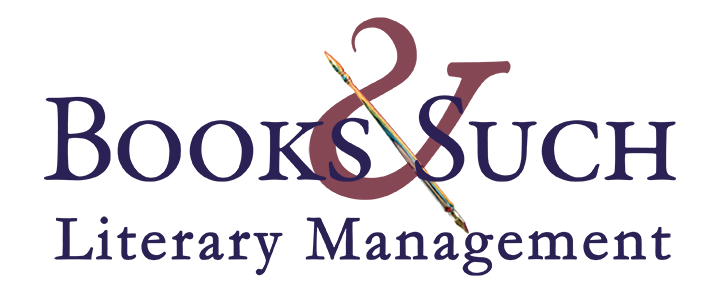Self or Trad: What do they share in common? Great question.
We’ve seen an undeniably radical increase in writers choosing self-publishing. Why? Innovations in technology, access to higher quality materials and options, and the shrinking of traditional publishing slots that can’t keep up in volume with all who write books these days, among other things.
For this blog post’s purpose–finding the common ground–it may help to examine what will be the same no matter the path you pursue. (Note that we will use the two ends of the spectrum for comparison–self-publishing versus mid-to-large size publishing house.)
Consider a comment by respected finger-on-the-pulse-of-publishing analyst, Jane Friedman. As she noted in a January 1, 2025 blog post, in traditional publishing, the publisher purchases the project and pays for editing, design, production, and distribution. In contrast, in self-publishing, the author “manages the publishing process and hires the right people or services to edit, design, publish, and distribute.”
What realities exist in both endeavors? What common ground do they share?

An author needs readers.
True. A book will remain pretty lonely without eager readers. Also true: Readers aren’t an automatic benefit of publishing. They have to be earned, whether the author is self-publishing or traditionally published.
Readers aren’t an automatic benefit of publishing. They have to be earned, whether the author is self-publishing or traditionally published.
A publisher cannot guarantee a cadre of new readers any more than a self-published author can count on all of her friends and family purchasing a copy. Readers are earned through the quality of product, professionalism of the product, need-meeting ability of the book, the reputation of the author, and having created a story worth reading. No matter how the book is published, readers are earned.
An author is a business person.
Treating either traditional publishing or self-publishing as a business is, in business-speak, a non-negotiable. You will pay taxes either way. You will need to keep track of personal marketing endeavors and each one’s ROI*. The author will be tasked with getting the word out about the book. The author will need to care for the community of readers they build, because they may be friends but they’re also customers.
No matter the publishing path, a smart business-person author will set aside funds for what he or she will invest in personally to get the book into the hands of the readers waiting for it. Giveaways or online ads or boosting social media posts or investing in updated software or even a virtual assistant… Self-published and traditionally published authors share the business-person mentality in common.
*ROI–return on investment. Is it worth what it cost? Side note: Isn’t it curious that ROI also is found in one of the names of God–El Roi, the God who sees! ROI will forever speak to the need to know that God knows better than we authors the results our efforts are producing.
A book’s success depends in part on reviews.
And that’s largely up to the author, whatever the publishing path. A publisher’s ability to solicit reviews is real but limited. So is a self-published author’s. Reviews can come from (but not guaranteed) Publishers Weekly, Kirkus Reviews, Library Journal, and possibly even through wisely-curated blog tours.
How is the author helping personalize or contribute to blog tours that invite reviews? No matter who publishes the book, the author is the only one whose interaction with the bloggers–through comments, gratitude, and shares–builds community, trust, and a desire to follow through with a review.
If the self-published author ignores the importance of reviews, they will pay a price in lack of visibility and discoverability of their book. The same is true of a traditionally-published book.
A wise decision about how to publish, market, promote, and talk about a book is no guarantee of publishing success.
Many great books have languishing sales numbers. And many poorly-written books sell wildly. As hard as we work, other factors are also at play, including reader reception, the publishing climate, current events, other similar books releasing at the same time, and mystery. Sometimes there is no explanation why one book sells and another doesn’t. No matter the publishing option.
Blood, sweat, and tears will always be involved.
What do self-published and traditionally published authors share in common? Hard work, tenacity, intentionality, planning, relationship-building. In the writing and editing, the decision-making, the marketing, the waiting. Blood, sweat, and tears…and lots of coffee or tea. Few authors–whatever path they’ve chosen–would disagree.
 Two dramatically different paths with a lot in common.
Two dramatically different paths with a lot in common.
For those who love research tidbits, the term “blood, sweat, and tears” is often associated with a speech from Winston Churchill. However, years before, a sermon from a Welsh preacher named Christmas Evans used the term in a sermon. You can read more here.
It takes time.
“Oh, but a self-published book can be in the market in a much shorter time frame than the achingly slow 1-2 years after contract with a traditional publisher,” you say? True in part. But either publishing path requires far more time than is comfortable for any author in the process of building a reputation as a trustworthy storyteller or nonfiction life-observer.
Time will always be part of the equation for a career writer. In the self-publishing world as well as traditional publishing, the author may find that time alone helps create the rhythm, author voice, sweet spot of reaching readers, and skill for ironing out wrinkles in how that author can best promote books.
When you’re creating a list of pros and cons for your own publishing path, realize that some key elements remain the same no matter which you pursue.
The two paths share common ground (beef).


My stories should be out there
(or such I had then thought),
breathing fresh lit’rary air
with the charm they brought
to those who their bright wisdom read,
and I would gain a following
in which I would be chose instead
of Patterson and Rowling.
But the plans of mice and men
do gang aft a-gley,
and that hope’s a Remember When
in a now-closed play,
but although the dreams have died,
what the heck, at least I tried.
Again, so cleverly expressed, Andrew. You’re an example of how–no matter where the words appear–thoughtfully created writing always finds an audience to bless.
I find two of your thoughts perseverating in my mind. First, I am shifting my mindset to include seeing myself as not only an author but also a business person. (Gulp) Second, I love the tie between God, El Roi, and an author’s ‘return on investment.’ My El-Roi knows what I must do as I walk forward in my new business mindset. He sees. He knows. He speaks. I trust.
Oh, that makes me happy! Thank you for commenting. Grateful it was meaningful to you.
This is so great, Cynthia! Such good reminders about what makes a book’s launch a possible success! Right now stockpiling a bunch of coloring pages to give away, buying original puppy art for possible cute t-shirts, and building up a backlist of adorable puppy adventures . . . with squirrel rampages! It’s Squirrel Appreciation Day and if you need a book with a squirrel rampage, well, you know where to go!
So cute!
Autonomous vehicles and drones will revolutionize deliveries. AI-powered traffic management systems will optimize urban mobility. Predictive logistics will reduce costs and improve supply chain efficiency. AI-driven fleet management will https://solaxy.io/home enhance route optimization.
Where does publishing with a “small house” fall in this debate?
In many ways, publishing with a small house feels most like self-publishing. Most small houses don’t have the marketing budgets of larger houses, just by nature. They work with a smaller staff. So, when discussing what’s the same between traditional publishing and self-publishing, we could have easily included small house publishing with a “same here, too.”